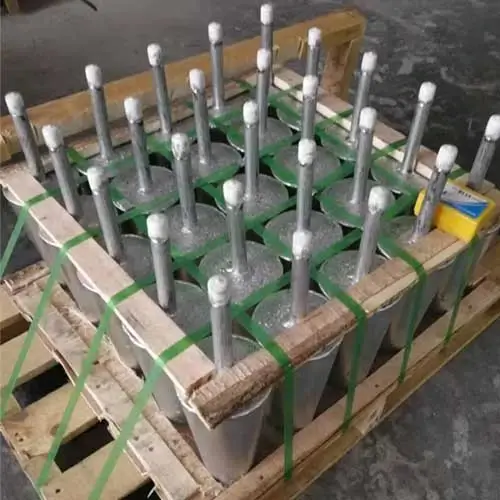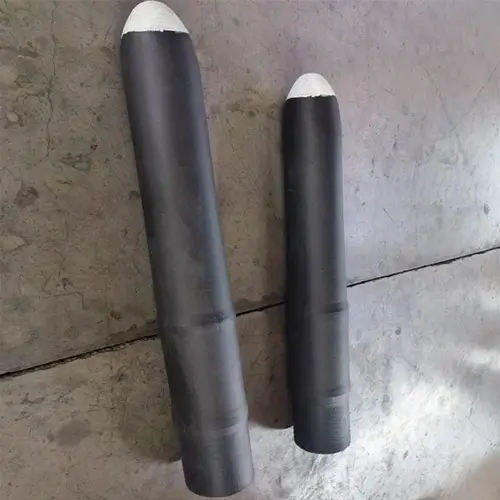1.Importance and maintenance of converter lining
The converter lining is a crucial component of the converter, maintaining the molten steel temperature within it within a high temperature range of 1620-1680°C. During its service life, the lining must withstand complex mechanical erosion and chemical attack from hot molten steel, airflow, and slag, creating a harsh operating environment. To ensure long-term stable operation, the lining must maintain the necessary rigidity to prevent disintegration, collapse, or cracks during cooling or heating.
Harsh environment and rigid requirements for furnace lining
As an integral component of the converter, the converter lining must not only withstand the complex mechanical erosion and chemical attack of high-temperature molten steel, airflow, and slag, but must also maintain the necessary rigidity to ensure stability during long-term service. Its importance is self-evident. Only a high-performance lining can ensure the stable operation of the converter, and thus guarantee the smooth and efficient operation of the entire production process.
Furnace lining materials and maintenance technology
Magnesia-carbon bricks are used for the converter lining, which has stricter requirements than the working linings of the ladle and tundish. Furnace life, a key indicator of converter performance, comprehensively reflects factors such as refractory materials, metallurgical fluxes, and the construction, use, and maintenance of the lining. During the steelmaking process, steel penetration accidents caused by excessively thin linings must be avoided. Therefore, we typically use a lining thickness gauge to monitor lining thickness and an infrared thermometer to track furnace shell temperature changes to ensure lining safety. Furthermore, the application of technologies such as charge replenishment and slag splashing is also important to extend the service life of the lining.
2.Design and Application of Key Components of Converter
The role of bottom blowing air bricks
Bottom-blowing vent bricks play a crucial role in the converter steelmaking process. They allow oxygen and other gases to be blown into the converter, effectively enhancing molten pool agitation and promoting carbon combustion, thereby improving steelmaking efficiency and yield. They also improve the composition and temperature of the molten steel, significantly enhancing its quality. Therefore, the proper use of bottom-blown vent bricks in converters is an essential component of the steelmaking process.
The converter bottom-blowing venting process significantly assists in optimizing the smelting flow field. Sangang Minguang utilizes nitrogen-argon switching in its converter steelmaking process. This combined blowing process has demonstrated excellent results, maintaining the service life of the vent elements at approximately 5,000 cycles.

Influence of taphole design
When discussing the bottom-blown degassing process in converters, we must focus on the design of the tapping hole. As a critical component in the smelting process, the rationality of its design directly impacts smelting effectiveness and efficiency. In the converter steelmaking practice at Fujian Steel Group, the tapping hole design has undergone meticulous optimization to ensure a smooth and efficient smelting process. This design not only enhances smelting output but also provides robust support for further refining the degassing process.
As the essential pathway for qualified molten steel at the end of smelting, the converter taphole utilizes magnesium-carbon brick material. This choice profoundly impacts molten steel quality control, temperature maintenance, and smelting costs. However, the current taphole lifespan is only 120 to 150 furnaces. This relatively short lifespan has become a major bottleneck constraining the efficient production of converters.
Functions of sliding nozzle and slag stopper
During converter smelting, the sliding nozzle and slag stopper are critical components for controlling molten steel flow. The sliding nozzle flexibly adjusts the flow rate and volume of molten steel, while the slag stopper blocks inclusions and slag particles to ensure steel purity. However, due to factors such as high temperatures and erosion, wear and failure issues with these components have become increasingly prominent, significantly impacting both converter efficiency and molten steel quality.
The converter slide gate slag-blocking system is meticulously constructed from five components: the tapping hole brick, inner nozzle brick, inner slide plate brick, outer slide plate brick, and outer nozzle brick—all made of magnesia-carbon bricks. This system plays a crucial role in producing high-quality steel by precisely controlling slag discharge volume to ensure molten steel purity. Typically, the slide plate has a lifespan of approximately 10 to 15 furnace cycles. Notably, both 100-ton converters and one 120-ton converter at Sanyang Steel Mingguang utilize slide plate slag blocking technology, while the other two 120-ton converters employ slag plugs for slag blocking operations.

